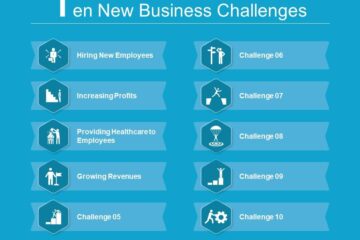
We bandy acronyms about so much that sometimes we assume everyone knows what they mean. Take the acronym ROI. While experienced business people may have an idea of what that means, I’ve had new entrepreneurs and non-native English speakers sheepishly ask me, “What is ROI?”
ROI stands for “return on investment.” Often you see “return on investment” defined for an investment in a company or a business, say as a stockholder or angel investor. For instance, if you’ve invested in a startup — someone else’s or perhaps your own startup — you probably should calculate how much of a return you have gotten on your investment in that startup company.
ROI Really Means: Are You Investing Your Funds Wisely?
Return on investment tells you if you are using your money wisely, when you invest. One thing that professional investors do is evaluate the potential ROI in a startup, compared with other investments they could make. For instance, can you get a better return investing in your nephew’s Internet startup — versus investing those same funds in the stock market?
Now, you may want to invest in your nephew’s startup just to help out your nephew — regardless of any ROI. In that case, you’re not really investing based on ROI. Your motivation is to help out a family member.
But professional investors and non-family members will most likely be looking for the ROI. As a startup entrepreneur, it’s going to be up to you to paint a picture of the potential return, calculate it realistically — and ultimately make sure there actually is a return on investment.
Fred Wilson, the well known investor in tech startups, has a helpful spreadsheet and accompanying explanation, on how to calculate a return on investment.
Get Used to Calculating ROI for Expenditures
However, ROI doesn’t need to be limited to measuring a return on investment in a new company.
Apply the ROI (return on investment) analysis more broadly to each expenditure. Ask yourself: if we spend that amount, will we really get a return, and how much can we expect to get?
As a business owner, when you discipline yourself to think about each expenditure in terms of what you get back from it, it will help keep your business profitable.
For example, if you are investing in a new advertising initiative, evaluate the results of that initiative in terms of “ROI.” Calculate how much you’ve spent on the marketing, and try to calculate the return. Calculating expenses is usually the easy part. Calculating the return just from that initiative can sometimes be the hard part.
Let’s take an easy example. If you’re selling with e-commerce, it’s usually not hard to calculate ROI on pay-per-click ads. With the right tracking technology, you can determine what you spend on pay-per-click ads, and the exact sales you get for those expenditures.
If only all businesses were that simple!
Unfortunately, they are not. In many businesses, it’s much harder to track exactly what triggers a sale. That’s because buyers often don’t make a buying decision based on a single factor or activity, such as clicking a pay-per-click ad.
You’ve probably heard the old truism that it takes a minimum of 7 marketing “touches” to get to a sale. That means it’s going to take multiple marketing activities over time to convince a buyer to buy — not just a one-time click. Before deciding to buy, a buyer may click on a search result, AND see a full-page magazine ad, AND read a blog post written by a company executive or about the company’s products, AND view some online banner ads AND enjoy the vendor’s Facebook updates — together all of those could have an impact. They could cause you to put that company at the top of your list, when you’re ready to buy.
For reasons such as these, ROI will be much more challenging to calculate in many industries and businesses.
If It’s So Hard, Why Bother Calculating ROI?
Just because it’s challenging, that shouldn’t be an excuse to throw in the towel. You should still attempt to calculate ROI. Even if you can’t attach a precise dollar number to a marketing activity, say, you may be able to determine that in general sales went up after you initiated a certain marketing campaign. You may be able to collect anecdotal stories or testimonials that a particular sale came as a direct result of a particular marketing activity (that’s why you should always ask new customers how they learned of you).
Track your expenditures in as detailed a way as possible. Identify expenses related to certain activities, or certain products or services you deliver. Use — really use — analytics tools. And calculate as best you can the value your business gets specifically after certain activities, or that certain products or services bring.
This overview at the Marketo blog outlines different methods of calculating a return on marketing, for instance. It points out the level of detailed analysis you need to get into.
The more data you collect and analyze, the better you will get at figuring out ROI. And the better you will get at spending your money wisely in your business.
[“Source-smallbiztrends”]



